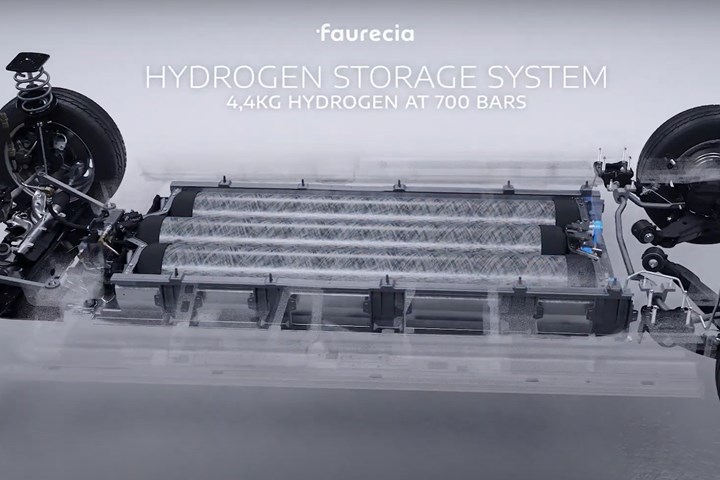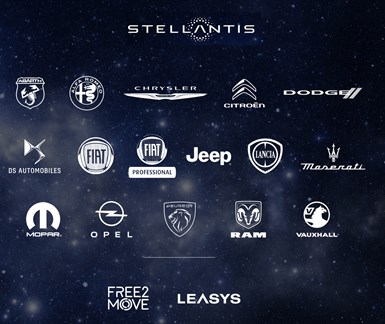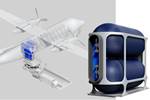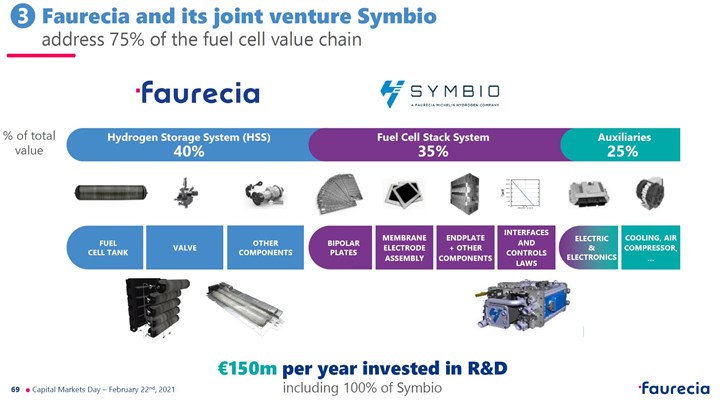Faurecia to supply CFRP tanks and hydrogen storage systems for Stellantis light commercial vehicles
Zero-emission fuel cell technology first available on Citroën, Opal and Peugeot vehicles with more to come.

Photo credit: Faurecia
Stellantis (Amsterdam, Netherlands), the multinational automotive manufacturer formed by the 2021 merger of Fiat Chrysler Automobiles and French company Groupe PSA, and composite hydrogen storage tank technology leader Faurecia (Nanterre, France) have collaborated to equip Stellantis’ new zero-emission family of light commercial vehicles with hydrogen storage systems, as well as fuel cell stacks through Symbio, Faurecia’s joint venture with Michelin.
Faurecia will develop, supply and assemble hydrogen storage systems from its global center of expertise in Bavans, France. With three high-pressure (700 bar) carbon fiber-reinforced polymer (CFRP) tanks carrying a total of 120 liters of hydrogen per vehicle, Stellantis' light commercial vehicles will have a zero-emission range of more than 400 kilometers.

Stellantis global brands. Photo credit: Stellantis.
Drawing on 10 years of experience, Symbio has developed for Stellantis a compact, low-weight fuel cell system delivering 45 kilowatts of gross power. These systems will be produced in France at Symbio’s Venissieux facility and, from 2023, in its new St. Fons site.
Faurecia has worked with Stellantis to optimize system design and integration to offer the best-in-class weight/performance ratio on the market. Mastering 75% of the fuel cell value chain, Faurecia is well placed to support the growing demand for zero-emissions hydrogen mobility solutions globally.
Photo credit: Faurecia Capital Markets Day 2021 presentation
Related Content
-
Polar Technology develops innovative solutions for hydrogen storage
Conformable “Hydrogen in a Box” prototype for compressed gas storage has been tested to 350 and 700 bar, liquid hydrogen storage is being evaluated.
-
Composites end markets: Batteries and fuel cells (2024)
As the number of battery and fuel cell electric vehicles (EVs) grows, so do the opportunities for composites in battery enclosures and components for fuel cells.
-
Collins Aerospace to lead COCOLIH2T project
Project for thermoplastic composite liquid hydrogen tanks aims for two demonstrators and TRL 4 by 2025.













